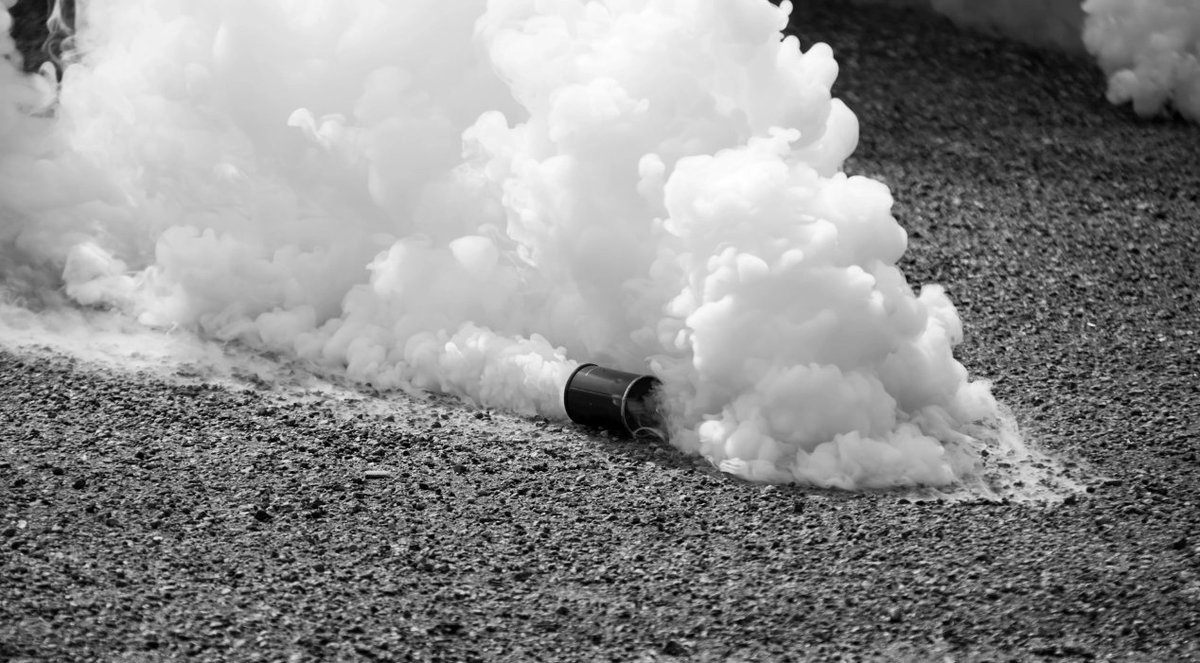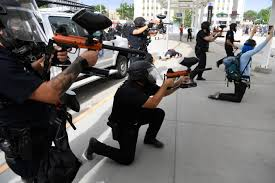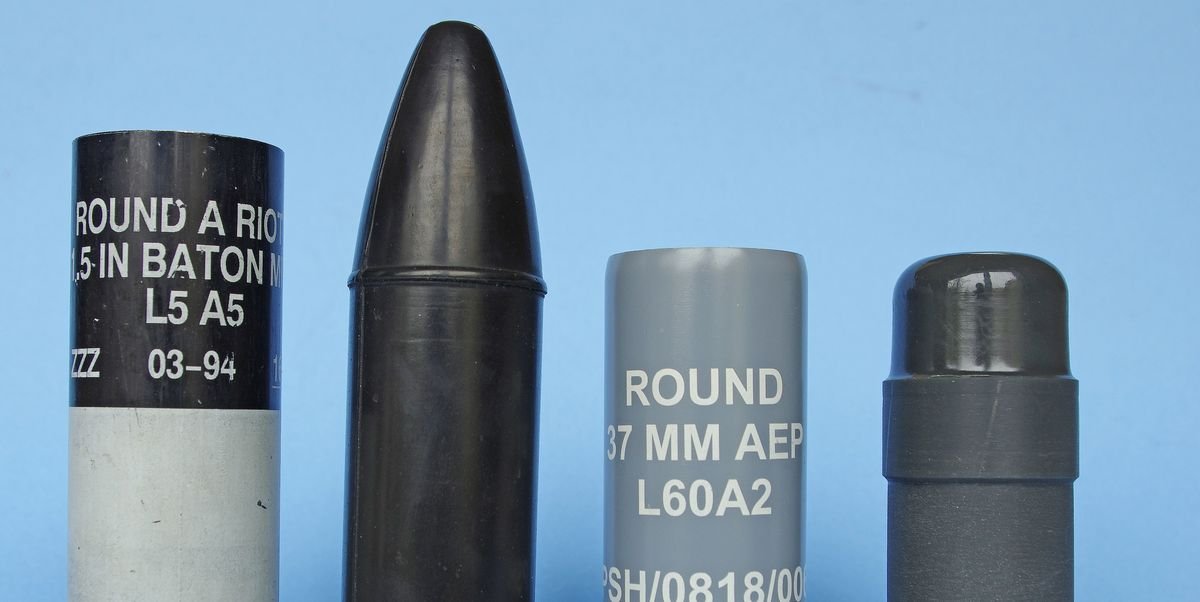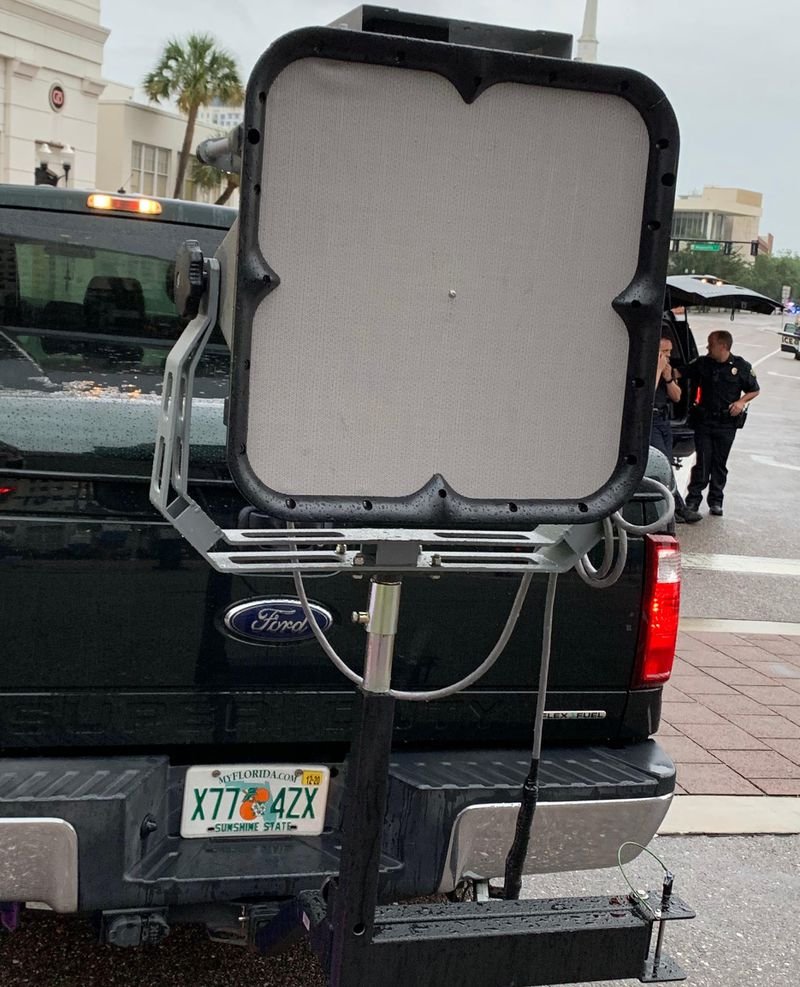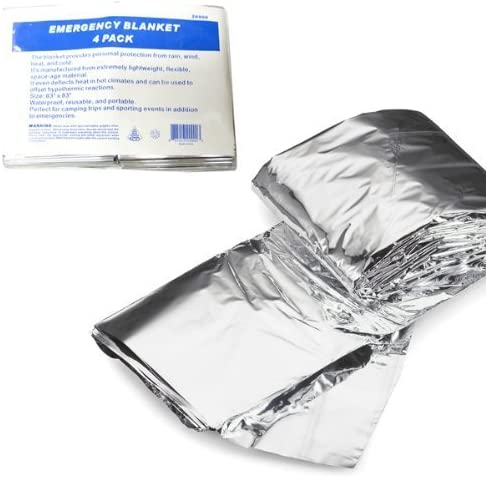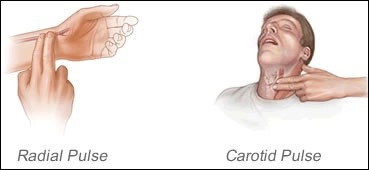Protest 1st Aid & Street Medicine: A (Long) Thread
In light of the murder of Walter Wallace Jr by police in Philly, the subsequent protests, & the upcoming election, it& #39;s probably good to start spreading some info around on how to keep yourself and others safe at protests. (1/?)
In light of the murder of Walter Wallace Jr by police in Philly, the subsequent protests, & the upcoming election, it& #39;s probably good to start spreading some info around on how to keep yourself and others safe at protests. (1/?)
Street Medic Role
If you are a street medic, your job is to treat injured protesters. Do not escalate, get in cops& #39; faces, throw things, etc. 1) This makes the other medics& #39; job harder, and 2) it puts you in danger, which prevents you from doing your job--helping people.
If you are a street medic, your job is to treat injured protesters. Do not escalate, get in cops& #39; faces, throw things, etc. 1) This makes the other medics& #39; job harder, and 2) it puts you in danger, which prevents you from doing your job--helping people.
Street Medic Scope
Only do what you are trained to do. Only carry equipment you can use in a dead panic. Know the other medics you are going with and their level of training, so you know who to direct the "oh shit" injuries to. If you are a protester, know where your medics are.
Only do what you are trained to do. Only carry equipment you can use in a dead panic. Know the other medics you are going with and their level of training, so you know who to direct the "oh shit" injuries to. If you are a protester, know where your medics are.
Medic/Protester Safety
Always go with a buddy or group. Know your buddy& #39;s level of risk/willingness to get arrested & try to pick a buddy with a similar risk level as you. Stay w/ your buddy. Stay alert at all times. Know your exits. Know your closest Trauma 1 hospitals.
Always go with a buddy or group. Know your buddy& #39;s level of risk/willingness to get arrested & try to pick a buddy with a similar risk level as you. Stay w/ your buddy. Stay alert at all times. Know your exits. Know your closest Trauma 1 hospitals.
A note on hospitals:
Not all hospitals have the same level of preparedness for trauma. When possible, bring serious injuries (gunshot wounds, for ex.) to Trauma 1 hospitals. This means they have a trauma surgeon on site 24/7. Search [city] Trauma 1 hospital to find ones near u
Not all hospitals have the same level of preparedness for trauma. When possible, bring serious injuries (gunshot wounds, for ex.) to Trauma 1 hospitals. This means they have a trauma surgeon on site 24/7. Search [city] Trauma 1 hospital to find ones near u
Consent
When approaching a person to offer help, always state your name (or street name/pseudonym), your training, and ask the person for consent. Example: "Hi, my name is Noodles and I& #39;m a street medic. Is it ok if I help you?" If they are fully alert & say no, that means no.
When approaching a person to offer help, always state your name (or street name/pseudonym), your training, and ask the person for consent. Example: "Hi, my name is Noodles and I& #39;m a street medic. Is it ok if I help you?" If they are fully alert & say no, that means no.
Implied Consent
If a person is unconscious or clearly confused, you have implied consent to treat. This means you assume the person would want you to do what you can to save their life/get them to a higher level of care. Once again though, only do what you are trained to do.
If a person is unconscious or clearly confused, you have implied consent to treat. This means you assume the person would want you to do what you can to save their life/get them to a higher level of care. Once again though, only do what you are trained to do.
Assessing Alertness/Ability to Consent
In medical jargon, when someone is fully alert we call it A&O x4. This means they are Alert and Oriented to Person, Place, Time, and Situation. You can quickly ask someone the following questions to determine their level of alertness:
In medical jargon, when someone is fully alert we call it A&O x4. This means they are Alert and Oriented to Person, Place, Time, and Situation. You can quickly ask someone the following questions to determine their level of alertness:
A&O cont.
1) What is your name? (Person)
2) Where are you? (Place)
3) What day is it? (Time)
4) Do you know why you& #39;re here? (Situation)
If they answer all 4 correctly, they are "A&O x4" and have the full ability to give or withdraw consent. Otherwise, assume implied consent.
1) What is your name? (Person)
2) Where are you? (Place)
3) What day is it? (Time)
4) Do you know why you& #39;re here? (Situation)
If they answer all 4 correctly, they are "A&O x4" and have the full ability to give or withdraw consent. Otherwise, assume implied consent.
IDing Expected Threats
There are many threats you can expect to face at a protest. I& #39;ll go over how to protect/treat later. Here are a few of the most common:
1) Tear gas canisters
-Large cylinders
-Usually ignited and thrown/shot into a crowd
-Emit cloud of white gas
There are many threats you can expect to face at a protest. I& #39;ll go over how to protect/treat later. Here are a few of the most common:
1) Tear gas canisters
-Large cylinders
-Usually ignited and thrown/shot into a crowd
-Emit cloud of white gas
2) Mace cans
-Hand-held
-Usually on officer& #39;s belts
-Usually sprayed at the face
-Emit cone of orange, oily substance
-Hand-held
-Usually on officer& #39;s belts
-Usually sprayed at the face
-Emit cone of orange, oily substance
3) Types of projectiles:
a) Pepper bullets
-Red markings on gun
-Release chemicals similar to pepper spray
b) Beanbag rounds
-Yellow/orange markings on gun
-Can be lethal if shot at close range
c) Rubber Bullets
-Bulky-looking gun
-Lots of damage to soft tissue
d) Live rounds
a) Pepper bullets
-Red markings on gun
-Release chemicals similar to pepper spray
b) Beanbag rounds
-Yellow/orange markings on gun
-Can be lethal if shot at close range
c) Rubber Bullets
-Bulky-looking gun
-Lots of damage to soft tissue
d) Live rounds
4) LRADs: speaker mounted on back of a police vehicle
-Do heavy acoustic damage in a cone
-Can be used as an actual speaker--if police are lined up BEHIND the speaker, higher chance it is being used for damage
-Cannot run into the cone to save someone--you will be incapacitated
-Do heavy acoustic damage in a cone
-Can be used as an actual speaker--if police are lined up BEHIND the speaker, higher chance it is being used for damage
-Cannot run into the cone to save someone--you will be incapacitated
Environmental Risks
1) Hydration is important regardless of the weather. Start drinking water the day before you plan to protest, and bring water as well
2) Food--eat a good meal before going to a protest, and bring snacks (or find medics, we sometimes have snacks)
1) Hydration is important regardless of the weather. Start drinking water the day before you plan to protest, and bring water as well
2) Food--eat a good meal before going to a protest, and bring snacks (or find medics, we sometimes have snacks)
3) Heat/Heat Exhaustion
a) Symptoms: Dehydration, fatigue, dizziness, feel vaguely ill, hot to the touch, muscle cramps.
-Initially, the person will sweat profusely. If untreated, they will eventually stop sweating--VERY BAD
-Can lead to loss of consciousness if not treated
a) Symptoms: Dehydration, fatigue, dizziness, feel vaguely ill, hot to the touch, muscle cramps.
-Initially, the person will sweat profusely. If untreated, they will eventually stop sweating--VERY BAD
-Can lead to loss of consciousness if not treated
b) Treatment: Give water if they are awake and able to drink fluids
-50/50 mix of water and gatorade is good for replacing sugar, too
-Cool towel for neck/forehead
-Remove excess clothing (as appropriate, with consent)
-If unconscious, do NOT give anything orally; get to hospital
-50/50 mix of water and gatorade is good for replacing sugar, too
-Cool towel for neck/forehead
-Remove excess clothing (as appropriate, with consent)
-If unconscious, do NOT give anything orally; get to hospital
4) Cold/Hypothermia
a) Prevention: Dress appropriately for the weather
-Dress in layers. The layer closest to your skin should be synthetic fabric, not cotton (think UnderArmour)
-Wear thick, good quality socks
-Hats that cover your ears, gloves, scarves
-Hand and toe warmers
a) Prevention: Dress appropriately for the weather
-Dress in layers. The layer closest to your skin should be synthetic fabric, not cotton (think UnderArmour)
-Wear thick, good quality socks
-Hats that cover your ears, gloves, scarves
-Hand and toe warmers
b) Symptoms: uncontrollable shaking, blue/discolored lips/skin, loss of feeling in hands/feet, exhaustion, confusion, slurred speech, drowsiness
-For people with darker skin, look for discoloration in fingernail beds
-Can lead to loss of consciousness
-For people with darker skin, look for discoloration in fingernail beds
-Can lead to loss of consciousness
c) Treatment
-Get person to a warm, dry place (a car with the heat on or a heated building)
-Provide w/ extra clothes/dry clothes
-Dry the person off if wet
-Cover w/ a thermal blanket
-Give hand warmers or hot drink
-If unconscious, don& #39;t give anything orally; get to hospital
-Get person to a warm, dry place (a car with the heat on or a heated building)
-Provide w/ extra clothes/dry clothes
-Dry the person off if wet
-Cover w/ a thermal blanket
-Give hand warmers or hot drink
-If unconscious, don& #39;t give anything orally; get to hospital
First Aid for Mace
1) Prevention/Protection: Goggles/face shield, long sleeves/pants
-DO NOT WEAR CONTACTS
2) Treatment
a) Eyes: flush with WATER ONLY
-Use sport top water bottle
-Wash from nose out (do not rinse into other eye)
-Instruct person to blink frequently
1) Prevention/Protection: Goggles/face shield, long sleeves/pants
-DO NOT WEAR CONTACTS
2) Treatment
a) Eyes: flush with WATER ONLY
-Use sport top water bottle
-Wash from nose out (do not rinse into other eye)
-Instruct person to blink frequently
b) Mouth: rinse and spit with water
c) Skin: In the cold, avoid putting water/fluids on the skin as much as possible
-Can wash the person& #39;s hands off with soapy water
-Instruct person to go home and take a cold shower using Dawn dish soap or similar (cuts thru oil well)
c) Skin: In the cold, avoid putting water/fluids on the skin as much as possible
-Can wash the person& #39;s hands off with soapy water
-Instruct person to go home and take a cold shower using Dawn dish soap or similar (cuts thru oil well)
First Aid for Tear Gas
1) Prevention: Goggles, long sleeves/pants
-Note: Do not pick up/throw canisters unless you have heat resistant gloves on.
2) Treatment: Leave gassed area
-Effects will wear off quickly after leaving the area
-Rinsing/flushing ineffective
1) Prevention: Goggles, long sleeves/pants
-Note: Do not pick up/throw canisters unless you have heat resistant gloves on.
2) Treatment: Leave gassed area
-Effects will wear off quickly after leaving the area
-Rinsing/flushing ineffective
First Aid for Projectiles
1) Protection/Prevention: Goggles, shields/barriers, body armor
-Motorcycle gear works well to soften the blow while being less expensive than plate & less conspicuous
2) Treatment
a) If hit in the head, check mental status (see A&O section above)
1) Protection/Prevention: Goggles, shields/barriers, body armor
-Motorcycle gear works well to soften the blow while being less expensive than plate & less conspicuous
2) Treatment
a) If hit in the head, check mental status (see A&O section above)
b) Check for broken bones & ability to move/feel extremities
c) Check for punctured skin/bleeding
d) Check for bruises/blunt trauma
e) If chemical projectile, treat exposure as above
f) Eye injury: cover w/gauze and get to hospital
Treatment for above covered later.
c) Check for punctured skin/bleeding
d) Check for bruises/blunt trauma
e) If chemical projectile, treat exposure as above
f) Eye injury: cover w/gauze and get to hospital
Treatment for above covered later.
IF UNCONSCIOUS:
-Get to hospital ASAP (911 or, preferably, put them in a car and drive real fast)
-In meantime, check for breathing and a pulse
-If no pulse, start CPR or get someone who knows CPR
~~~
More to come, stay tuned!
-Get to hospital ASAP (911 or, preferably, put them in a car and drive real fast)
-In meantime, check for breathing and a pulse
-If no pulse, start CPR or get someone who knows CPR
~~~
More to come, stay tuned!
Quick video refresher on CPR:
Start">https://youtu.be/H1iCZgYEY... at 1:12
Start">https://youtu.be/H1iCZgYEY... at 1:12
First Aid for Light/Moderate Trauma
1) Superficial cuts/scrapes
a) If not bleeding, likely does not need treatment
b) If bleeding, rinse off area with water
-Remove debris as best you can
-Apply alcohol/disinfectant
-Apply neosporin/triple antibiotic ointment
-Cover with bandaid
1) Superficial cuts/scrapes
a) If not bleeding, likely does not need treatment
b) If bleeding, rinse off area with water
-Remove debris as best you can
-Apply alcohol/disinfectant
-Apply neosporin/triple antibiotic ointment
-Cover with bandaid
2) Bruises/Blunt Trauma/Sprains/Strains (no broken bones/head injury)
a) Offer ice pack/cold compress
b) Offer advil or Tylenol if you have it
c) Instruct person to elevate limb and rest as much as possible
a) Offer ice pack/cold compress
b) Offer advil or Tylenol if you have it
c) Instruct person to elevate limb and rest as much as possible
3) Slightly deeper wounds
a) Use water & clean cloth to clean area
b) ID site of bleeding
c) Clean wound as best as possible using soap & water
d) Apply gauze to wound, compress injury to stop bleeding
e) Wrap securely with a bandage (non-stick medical tape is great!)
a) Use water & clean cloth to clean area
b) ID site of bleeding
c) Clean wound as best as possible using soap & water
d) Apply gauze to wound, compress injury to stop bleeding
e) Wrap securely with a bandage (non-stick medical tape is great!)
4) Limb Fractures
a) Splint broken bone so it is immobilized above and below the break
b) Can buy a SAM splint, but any rigid object (incl. protest signs!) are good
c) Splint limb as you found it
d) Place splint along broken bone
e) Secure tightly w/bandage
f) Get to hospital
a) Splint broken bone so it is immobilized above and below the break
b) Can buy a SAM splint, but any rigid object (incl. protest signs!) are good
c) Splint limb as you found it
d) Place splint along broken bone
e) Secure tightly w/bandage
f) Get to hospital
YT Tutorial on Splinting: https://www.youtube.com/watch?v=9rQ6PPAPA4I">https://www.youtube.com/watch...
Heavy Trauma-Gunshot wounds
1) Get to a safe place
2) If conscious, get consent to treat
3) Instruct someone nearby to get their car for transport--study after study shows that this has a better chance of survival than waiting for an ambulance.
1) Get to a safe place
2) If conscious, get consent to treat
3) Instruct someone nearby to get their car for transport--study after study shows that this has a better chance of survival than waiting for an ambulance.
4) ID bullet wound & apply pressure
-Gauze, bandannas, anything cotton works
-Have to really get your hands into the wound to be effective at stopping the bleed
5) If wound is to extremity, apply tourniquet "high and tight" on the affected limb (see video) https://www.youtube.com/watch?v=y81aJ81ln5Q">https://www.youtube.com/watch...
-Gauze, bandannas, anything cotton works
-Have to really get your hands into the wound to be effective at stopping the bleed
5) If wound is to extremity, apply tourniquet "high and tight" on the affected limb (see video) https://www.youtube.com/watch?v=y81aJ81ln5Q">https://www.youtube.com/watch...
6) If wound is on head or torso, apply pressure and drive fast
Severe penetrating injury: same as above, and DO NOT REMOVE THE OBJECT! It is actually helping to stop the bleed
ID nearest Trauma 1 hospital (see above) and drive fast
End thread. Please share and ask any qs!
Severe penetrating injury: same as above, and DO NOT REMOVE THE OBJECT! It is actually helping to stop the bleed
ID nearest Trauma 1 hospital (see above) and drive fast
End thread. Please share and ask any qs!

 Read on Twitter
Read on Twitter